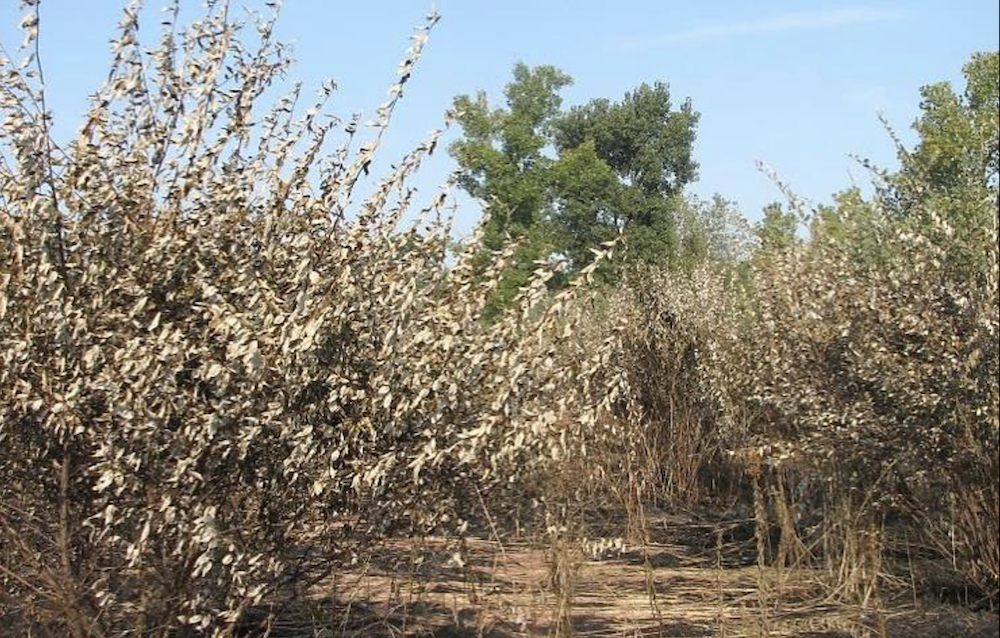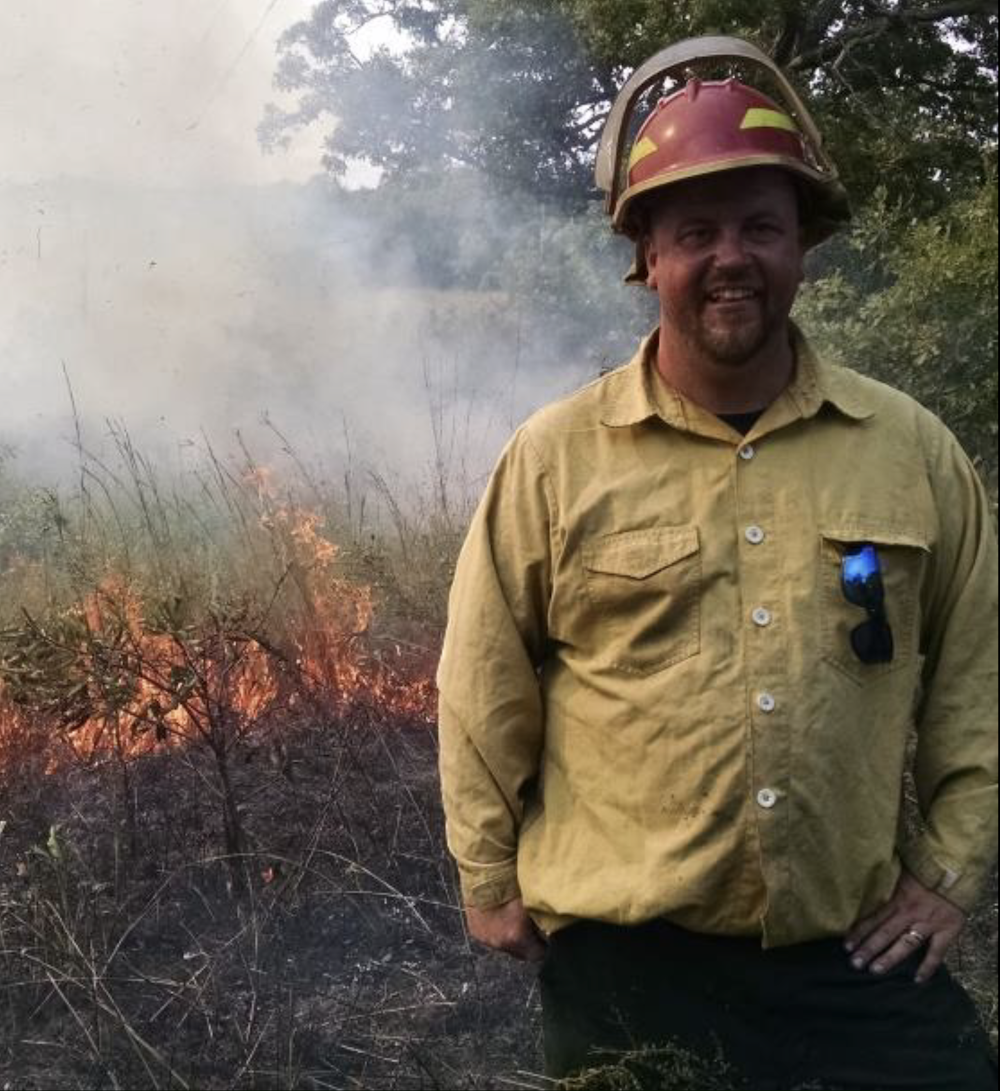
Photo by Bob Gillespie.



Photo by Bob Gillespie.
Illinois, the Prairie State, has lost more than 99 percent of its namesake habitat. Less than 3,000 of what was once 21 million acres of prairie remain in Illinois. For decades, Illinois Department of Natural Resources (IDNR) biologists have been working to enhance, restore or protect prairies. Unfortunately, many prairie restoration projects fall short of emulating a native prairie because they are often dominated by tall warm-season grasses, such as Indian grass (Sorghasttum nutans), big bluestem (Andropogon gerardi) or switchgrass (Panicum virgatum) and have little forb (wildflower) diversity.

One reason prairie restorations often become tall grass monocultures is because the original seeding rate was high in grasses. Early prairie seed mixes often contained 10-plus pounds of grass seed per acre and little, if any, forb seed.
Today, many biologists use seed mixes having less than 5 pounds per acre of grass seed and as many forbs as the project can afford. Many plantings not supposed to contain any tall grasses can, however, end up tall grass monocultures. Whether these grass species come in as “weed” seed within the seed mix or are pre-existing in the seed bank is debatable, but tall grass species often end up dominating plantings where they were never intentionally planted.
Another reason that even small amounts of Indian grass, big bluestem or switchgrass can thrive in prairie restoration projects is because of current management practices. Winter and early spring burns give a competitive advantage to these aggressive, warm-season, tall grass species by suppressing desirable forb species. Without varying burn timing, land managers usually end up with low-diversity, grass-dominated plantings. In recent years, one tool used to help correct this imbalance is burning during the summer growing season.

IDNR growing season burns are usually implemented from mid-July through September and result in less dominant grass populations and an increase in forb abundance and diversity. Growing season burns improve the species composition and structure of plant communities in grasslands. They also improve the amount of bare ground that can support native bee populations. Growing season burns do not create the “moonscape” typical of a hot and flashy spring burn. The primary fuel source for growing season burns is the thatch, while dead or dormant standing fuel also burns during dormant season burns. This fuel carries the fire slowly underneath actively growing plants, often top-killing the plant but leaving it standing, which typically leaves a patchy mosaic of burned and unburned areas. These burns often do not carry well through shaded areas. Thus, units that undergo a growing season burn still provide valuable refuge for insects, reptiles, amphibians and small mammals, and can provide cover for wildlife species throughout the fall and winter months as well. In contrast, late fall/winter burns tend to leave no cover. In fact, research by Decker and Harmon-Threatt (2019) showed an increase in overall bee abundance in units that had undergone growing season burns. This research was conducted at Prairie Ridge State Natural Area, 12 Mile Prairie and other prairie remnants and restorations in southeastern Illinois, so it directly relates to Illinois prairies and bees.
Conducting growing season burn may also benefit certain species of Papaipema moths. Caterpillars and/or pupae of this group of moths are below ground during this period and are not impacted by fire. This group of moths include the state listed rattlesnake-master borer moth (Papaipema eryngii). Managers in southeast Illinois have been using growing season burning for years on sites where this moth occurs with no negative impacts. This moth emerges in late September to lay eggs outside of the growing season burn period.
Growing season burns also have been documented to show a positive response from prairie forbs that are considered Illinois species of conservation concern. Observations of the response by species that are early spring or summer flowering prairie forbs to growing season burning has been encouraging. The largest populations of the state endangered prairie rose gentian (Sabatia campestris) have been documented years following a growing season burn. One population in southeastern Illinois contained more than 50,000 plants following a growing season burn in 2021. Populations of tube beardtongue (Penstemon tubaeflora) also have the highest numbers of individuals following growing season burns compared to dormant season and no burning. Other spring and summer flowering species show positive responses to growing season burnings primarily to the reduction in grass densities and other competition.

Another structural advantage of completing a growing season burn is that it is easier to complete management activities afterwards. Removal of exotic shrubs after a summer burn is easier as plants can be identified, and live stems removed. INDR managers have had success using both basal bark treatments and cut-stem treatments of exotic shrubs following growing season burns. Additionally, the scarcity of duff left behind after a growing season burn can be a benefit for inter-seeding additional forb species during the upcoming fall and winter months.
Additional benefits of growing season burns are more effective control of invasive species and decreasing the staff workload during the spring burn season. Many exotic invasive species can be killed, or their growth negatively impacted, by burning at a time when they are flowering, and little soil moisture is available to the plant. Burning in late August or early September means that shallow-rooted plants, such as autumn olive, are stressed and recovery from the effects of the flame may be difficult. Even if these exotic invasive plants can recover, they are more susceptible to subsequent burns or chemical treatment. Other invasive species, such as Serecia lespedeza, appear to produce little to no seed if burned when flowering.

Post burn treatment of Sericea lespedeza has proven to be an effective management tool. Foliar application of appropriate herbicides once the sericea lespedeza has resprouted makes control more efficient than traditional foliar applications which miss young plants in dense vegetation. Additionally, control of other invasive herbaceous and woody species such as sumac, blackberry, thistle and other woody stems can be implemented post burn by treating resprouting stems.
Growing season burns directly impact vegetation by top killing the plants, reducing vigor and depending upon the species impacting seed production. Follow-up herbicide treatments of resprouting stems or seed provide managers with an opportunity to selectively control invasive species without having secondary impacts.
Special thanks to retired District Wildlife Biologist John Tippett and IDNR Division of Natural Heritage Stewardship Specialist Terry Esker for providing input to this article.
Bryan Eubanks has been an IDNR district wildlife biologist for 11 years. He earned his B.S. and M.S. from Southern Illinois University. He previously worked as a wetland ecologist for a private consulting firm, as a natural heritage resident for the Illinois Nature Preserves Commission and as a park ranger at Rend Lake. Eubanks currently is based in Charleston and covers Coles, Douglas, Edgar and Moultrie counties.
Submit a question for the author
Question: Hi Bryan. I feel that Indigenous practices, deliberate and nuanced, around using fire have never been given the respect they deserve. Sadly the generations who knew them, could have taught about them are all dead. Some of the stories live on…but often we know-it-all white folk discount them as just stories…not history lessons. Anyway…what do you think about this? And how it relates to the ‘novelty’ of the restoration community ‘discovering’ summer burns?